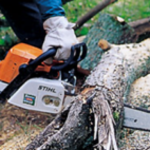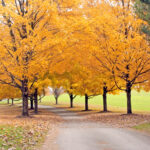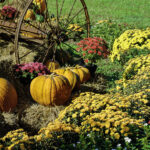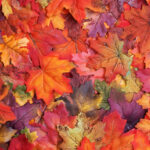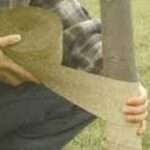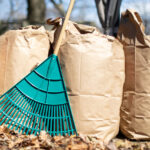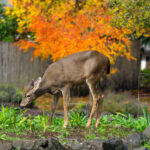October
Benefits of Fall Lawn Seeding
By the Old Guy with the Ponytail
- Cooling soil temperatures in the fall promote deep roots and improve lateral top growth
- Turf will continue to develop until the ground freezes
- Grassy weeds such as crabgrass are less competitive in the fall. Crabgrass and other annual grassy weeds die with the frost providing a natural mulch. This mulch protects the new turf and insulates against temperature extremes as the temperatures decline throughout the fall growing season
- Broadleaf weed control products should be applied at least 3 weeks prior to seeding in the fall
- Fertilizer applied at the time of seeding and again no later than November 15th will promote turf development until the ground freezes and also stimulate early spring green up
- Fall seeding provides more time for turf to develop before having to endure summer stress.
Benefits of Fall Lawn Fertilization
By the Old Guy with the Ponytail
In the fall, more than any other time of year, your lawn manufactures carbohydrates. It manufactures these carbohydrates in the green leaves. It uses these carbohydrates for energy to recover from summer stress and develop thru the fall. Surplus carbohydrates are stored in the roots and utilized the following spring to support top growth. Fertilizer applied in the fall supports and stimulates carbohydrate production. Two thirds of the yearly nitrogen fertilizer applied to your lawn should be applied in the fall.
One third should be applied in the early fall around Labor Day. Fertilizer at this time helps the lawn to reestablish a deep root system compromised by summer stress. It also promotes lateral top growth which creates a thick, green, aesthetically pleasing lawn. A thick lawn is the most effective preventative for both broadleaf and grassy weeds. Existing broadleaf weed populations are effectively controlled with weed control products at this time of year. Removal of broadleaf weeds allow the lawn to fill in these areas.
One third of the yearly nitrogen fertilizer on your lawn should be applied in the late fall, at the end of the growing season after the turf has gone dormant but before the ground freezes, typically between the end of October and Mid November. Fertilizer applied at this time of year is almost entirely utilized for root development and the production and storing of carbohydrates for use the following spring.
Improve your lawn this fall
By the Old Guy with the Ponytail
Fall is the time to repair and improve your lawn. Throughout the summer, dry weather and heat coupled with the potential for disease, insect and weed competition take a toll on turf quality. Cooling fall weather trends along with the potential for rain make early fall the best time of year for lawn repair or renovation. Changing fall weather trends stimulate lateral growth and root development for both established and newly seeded turf areas. Optimum soil conditions such as adequate oxygen, moisture and nutrient availability support fall turf development. The following is a list of beneficial fall lawn practices to insure turf development.
- Remove existing weed populations if populations warrant treatment.
- Treat lawn 2 to 3 weeks prior to seeding based on weed control product label recommendations.
- Test soil to determine nutrient levels and soil pH
- Core aerate to relieve compaction and increase air, water and nutrient availability
- Aggressive aeration would be considered holes on 2” centers, 2” to 3” depth
- Lime and fertilize based on soil test recommendations.
- Apply a cool season turf seed blend or mixture.
- Core aerate and slice seed if existing turf density is 50% or less
- Drag your lawn with mat after seeding to pulverize the soil cores and improve soil/seed contact


